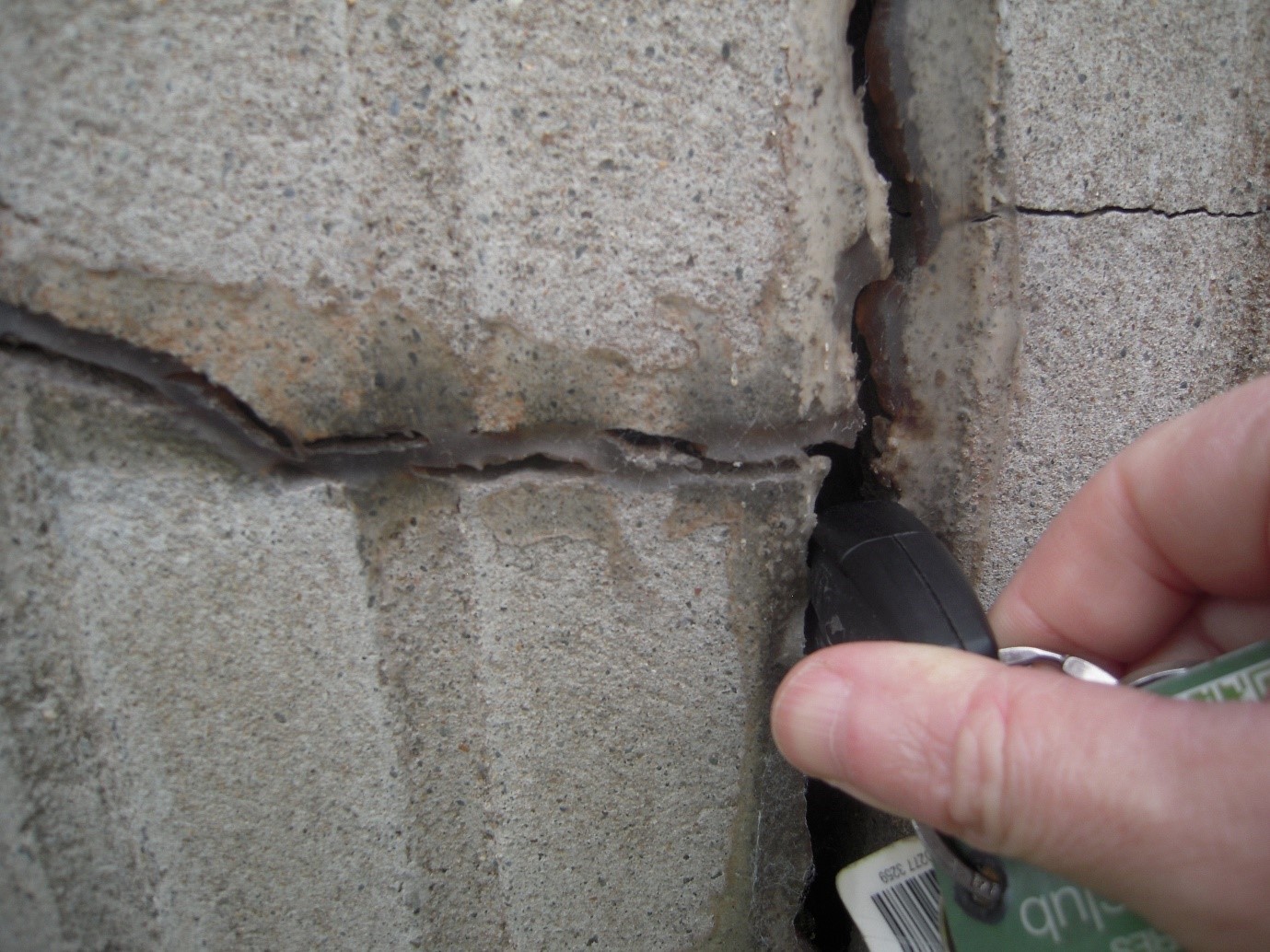Building Defects – Defective Concrete Blocks
Defective concrete blocks used in the construction industry could be causing structural problems to hundreds of homes throughout Donegal.
It would appear there is an issue with the concrete blocks which are causing them to crumble.
This is on a large scale. These cracks may look like normal settlement cracks at the early stages following construction.
However, the cracking gets worse over time. In most cases the cracks start to appear around five years or sometimes longer after construction.
Upon further investigation it becomes apparent the actual concrete blocks beneath the plaster can be easily broken. In some instances the defective concrete blocks can be broken with as little effort as rubbing them with your fingers.
I have called on the Government to set up a redress scheme for Donegal homeowners, similar to the Pyrite scheme in Leinster.
The Background on Defective Concrete Blocks
It would appear there could be a defect within concrete blocks for building purposes which is causing them to crumble.
Possible causes could be a combination of low cement content, fine stone and Muscovite Mica.
The issue is very similar to the Pyrite problem which is still a major issue in the Leinster Region.
It was initially thought this problem was confined to a small area in County Donegal. However, with the recent press coverage and increased public knowledge, the problem is widespread throughout the County.
How we got here
A call to a local Radio station enquiring about Pyrite raised alarms and I responded with general information.
The station then requested a detailed live discussion due to public demands for further information.
On air I discussed Pyrite and exterior cracks on houses throughout Donegal.
An overwhelming response from listeners who recognised the symptoms discussed – especially the issue of cracked exterior walls.
Since then I have been working to create an awareness to this County wide issue by contacting Local and National Press, Local Representatives, Councillors and TDs.
The Symptons of Defective Concrete Blocks
Householders are being faced with mapped or web-like cracking to external walls, crumbling blocks and plaster cracks.
In some cases, floors are starting to rise, floor tiles are cracking, and internal doors are becoming difficult to close.
The symptoms include;
- Sporadic web/mapped like cracking to external walls.
- The cracks are on the external walls only with no corresponding cracks internally.
- Vertical cracks close to the corners which extend from the ground to the roof.
- Horizontal cracks on the gables.
- The elevations most susceptible to the weather appear to be the worst affected.
The cracks deteriorate at an accelerated pace. The only remedy is to take down the affected walls. The cost will be in the tens of thousands of euro.
What to do next if you have a problem with Defective Concrete Blocks
We can help by;
-
Carrying out a Building Condition Assessment in accordance with Irish Standard I.S.465:2018 “Assessment, Testing and Categorisation of Damaged Buildings Incorporating Concrete Blocks Containing Certain Deleterious Materials.” This is required to ascertain if there is damage present, to categorise the building, assist in determining where samples should be extracted from and to assist the laboratory geologist determine the appropriate testing regime.An interim report is issued at this stage.
-
Testing of samples. This is required to determine the cause of damage whether framboidal pyrite, free muscovite mica or any other possible causes. This information aids us to determine the recommended remedial works to fix your home. A final report is issued at this stage.
-
The final report as per item above is used to support your application for the Grant Aided Scheme for Dwellings Damaged By The Use Of Defective Concrete Blocks In Construction (Remediation) (Financial Assistance) Regulations 2020.
- Advising on how to proceed
This issue has become a major worry for many homeowners throughout the County.
We understand your home is your largest financial investment and we know how daunting this process can be.
Contact us to discuss your concerns and share this information with others who may be affected by Defective Concrete Blocks.
What is Pyrite?
PYRITE is a naturally occurring mineral which causes significant structural damage to homes if used in the infill below floor slabs.
Also known as ‘fool’s gold’, traces of the substance are found in the rock used to make crushed stone for backfill in the construction of homes and buildings.
In the presence of humidity and oxygen, pyrite can form a chemical reaction which leads to swelling within the backfill, resulting in structural damage to the home.
Pyrite or Iron Pyrite (FeS2) is a very common mineral that is present in many sedimentary rocks as framboidal crystals.
Subject to certain conditions, pyrite is problematic in confined construction, such as under floor filling and bridge embankments.
This is due to a chemical reaction that can cause pyritic backfill to swell.
Construction material containing relatively large amounts of pyrite minerals are likely to
expand, crack and/or crumble over time.
This occurs when framboidal crystalline pyrite, air and moisture, mix causing a chemical reaction to occur that creates expanding crystals within the material.
Areas Affected by Pyrite
The confirmed areas that have been affected by pyrite-heave are mostly concentrated in North Leinster, particularly in North County Dublin, Offaly, Meath and Louth.
What are the tell-tale signs of pyrite damage?
If a building is suspected of having a pyrite problem some of the typical observable signs are:
- Heaving (lifting) of a floor slab resulting in slopes and cracks.
- Cracks to floor tiles/damage to floor finishes.
- Uplift at external door thresholds.
- Doors catching on floors.
- Cracks over doors on internal walls.
- Ground floor stud partitions with cracks, bulging of plasterslabs.
- Horizontal cracking externally at DPC level.
What to do next…..
Engage a Chartered Engineer (compentent approved Engineer) who has experience with this issue to assess the Pyrite Damage.
This is to be a Building Condition Assessment in accordance with I.S 398 part 1, to determine the presence or absence of damage consistent with pyritic heave, and also to quantify the extent of this damage.
The Engineer will give your property a Damage Condition Rating. Depending upon the rating you then can make an application to the Pyrite Redress Scheme for assistance.
In order to make a valid application for inclusion in the Scheme, the online application form must be fully completed and submitted to the PRB.
The Building Condition Assessment Report of a competent person must be electronically attached to the application in pdf format. The Building Condition Assessment must record a Damage Condition Rating of 2, as defined in the Irish standard I.S. 398-1: 2013 Part 1, in order to be validated.
Damien McKay has passed the associated examination completing the course in Pyrite Testing and Methodology for Remediation Works; Key aspects of I.S. 398 (Part 1 &2).
He is an approved Engineer on The Engineers Ireland Pyrite ‘Design Professionals’ (DP) Register.





Loading...